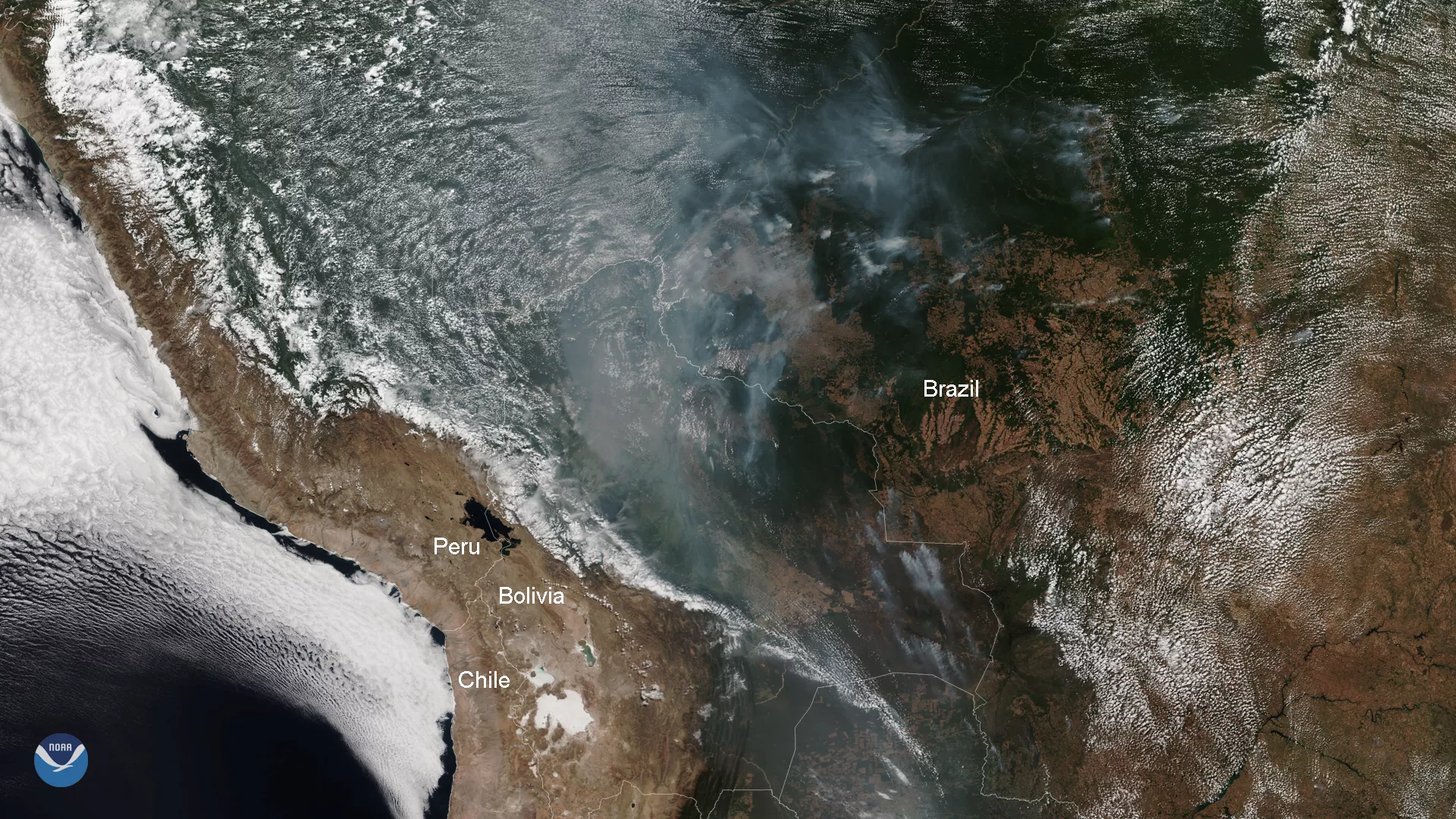
Throughout most of its history, the Amazon rainforest was relatively fire-resistant thanks to its natural moisture and humidity. Wildfires there today are caused by a combination of droughts and human activity; the intensity and frequency of droughts in turn, have been linked with increases in regional deforestation and anthropogenic climate change. In fact, the Amazon rainforest has experienced three major droughts, considered “ once-in-a-century events ” in 2005, 2010, and in 2015-2016.
When trees have less water during droughts, they shed extra leaves or die, leaving leaf litter and detritus on the forest floor. Without a dense canopy to retain moisture, much of the forest’s humidity is lost. Additionally, the practice of “selective logging” of specific tree species and “slash and burn” agriculture opens the canopy further, which also dries out the understory and forest edges.
In this image, taken by NOAA-20, the smoke from these fires can be clearly seen. This smoke absorbs sunlight, not only preventing it from reaching the ground, but cooling the surface and heating the atmosphere. This process can suppress the formation of clouds.
This true-color image was captured by the VIIRS sensor onboard NOAA-20, which provides daily, high-resolution visible and infrared images of Earth's atmosphere from across the globe.
